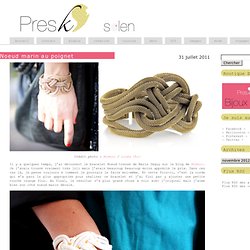

Applying Golden Section Concepts to WW2 Suits « 3 Hours Past the Edge of the World. I’m making the View 2 Jacket from Advance 2960 for Sherry’s RTW Tailoring Sewalong.

Thanks to miserly cutting, I (probably) have enough fabric left to make a slim skirt. I already have an a-line skirt with an inverted front pleat so I won’t use the pattern’s skirt. Besides I feel a desire to stretch my drafting muscles a little. Some of you may remember my first post on Golden Ratio and how it may apply to sewing: “Sometimes in the course of garment construction or design, the sewist must make a seemingly arbitrary decision about… length, {or} depth… A poor judgment call on one of these seemingly random decisions can render the garment dowdy or ridiculous… The ancients faced a similar problem in architecture, and artists often turn to the golden ratio in their work. Since then, I’ve applied the concepts to several projects- Maria Jeans and the Moderne skirt length among them. Let me walk you through my work the other day as I puzzled this out. A/b = 1.618 .7/b = 1.618 .7 = 1.618(b) b = .43. Pattern Drafting & Draping.
Creativa 2. Creativa. N.8. N. 7. Noeud marin au poignet. 31 juillet 2011 Crédit photo : Mimnor / Linéa Chic Il y a quelques temps, j’ai découvert le bracelet Noeud tressé de Marie Séguy sur le blog de Mimnor.

Je l’avais trouvé vraiment très joli mais j’avais beaucoup beaucoup moins apprécié le prix. Dans ces cas là, je pense toujours à comment je pourrais le faire moi-même. Et cette fois-ci, c’est la corde qui m’a paru la plus appropriée pour réaliser ce bracelet et j’ai fini par y ajouter une petite touche orange fluo. Il n’ai pas très compliqué à faire, il faut juste bien faire attention à ne pas passer au-dessus au lieu d’en-dessous et vice versa.
Num. 4. Num. 5. Num. 3. Numero 2. Num. 1. Diy/tutorial cartera acordeon. Material: Tela de 2 colores o estampados diferentesCinta métricaTijerasGreda, lápiz de color para marcarPlancha Recortamos las piezas que vemos en el dibujos,son 1 rectángulo grande (35 cm de largo X 16 de ancho) uno será para el forro A y otro para la parte exterior B ;además 5 rectángulos del mismo color del forro C (22 cm de largo X 16 de ancho).

Se unen las piezas A y B, cosiendolas por la parte posterior dejando un extremo libre. Después voletamos al derecho, hacemos un dobladillo de 1 cm y cosemos para cerrar. Tomamos las piezas C, las doblamos a la mitad y cosemos los 2 extremos por la parte posterios,después volteamos al derecho y hacemos un pequeño dobladillo para cerrar. Repetimos éste paso en todas las piezas C, usaremos 2 partes para los costados y 3 para la parte interna. Tomamos 2 piezas C, giramos para usarlas de forma horizontal, dividimos en 5 partes iguales, marcamos con greda o lápiz de color y después planchamos para fijar, formando un acordeón!